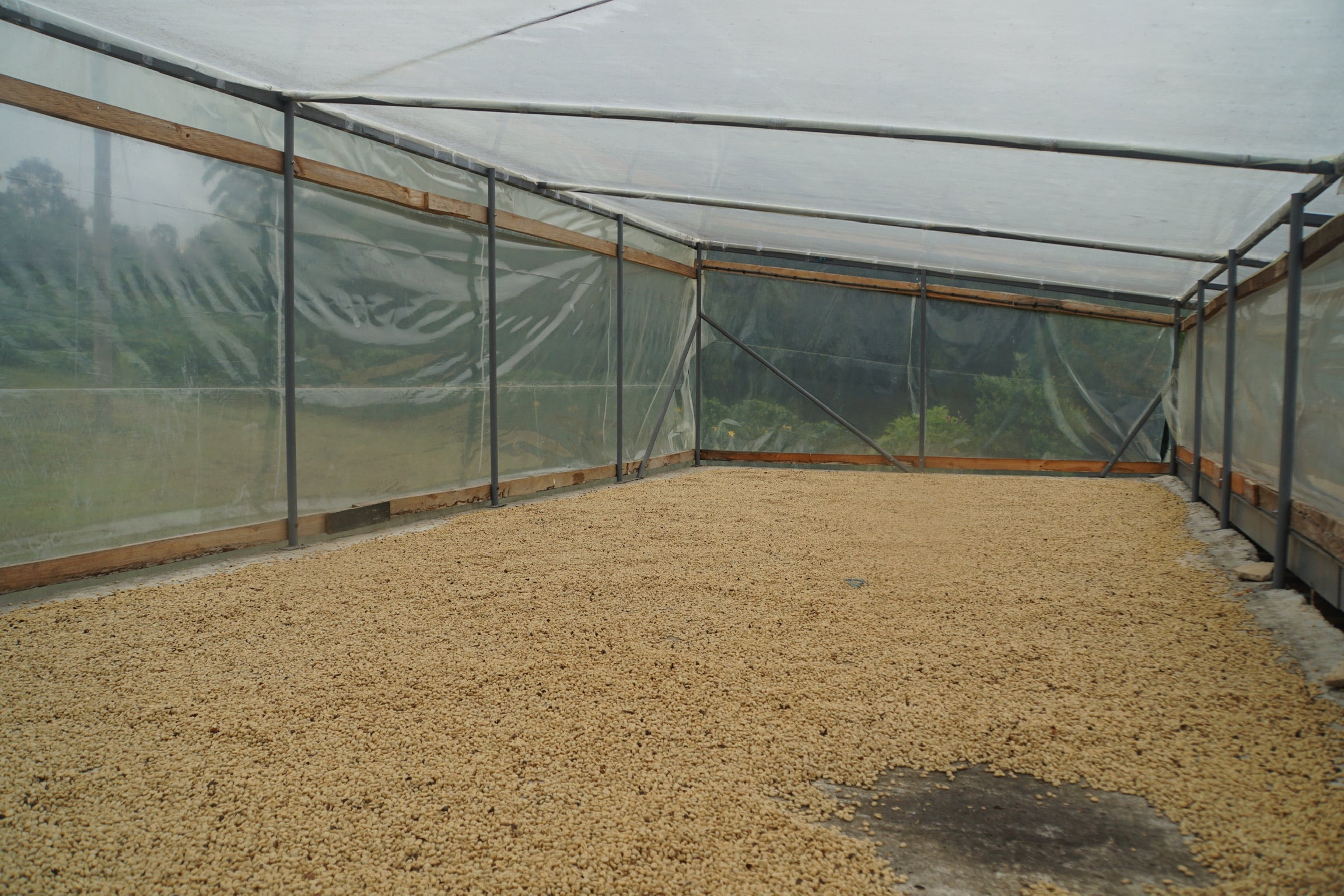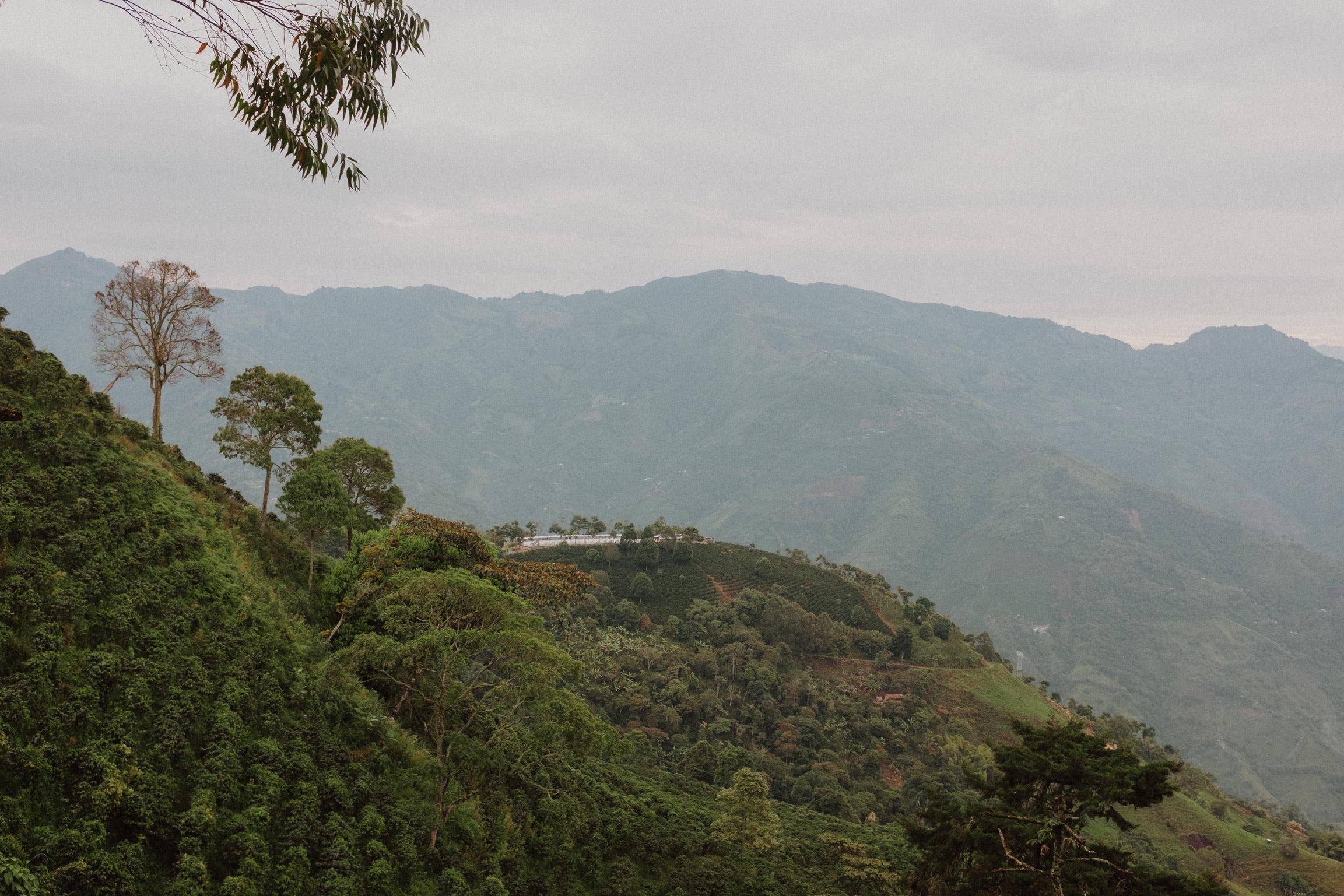
Roasting
At Pergamino, we are artisanal roasters. is means several things. First, that we roast in small batches under the careful oversight of a master roaster. We analyze each batch of green coffee in depth in order to determine the ideal roasting curve for its density, profile and final destination.
Big companies use automated roasters, controlled by a computer at every step of the process. Not so at Pergamino. Our master roaster is always attentive, not only to factors such as time and temperature, but also to fragrance and visual appearance. At crucial points in the process, a few seconds can change the entire profile of a coffee — meaning that the ability to react quickly to subtle changes is critical in high-quality roasting. To this day, no one has been able to develop a technology more capable of this important job than a passionate and highly qualified master roaster.
The most important aromatic components in a coffee are its oils, stored within the cell walls of the bean. Roasters must take great care that these structures do not break down, and that the oils are kept safely sealed in the bean until it is ground and brewed in water. When you see coffee beans that appear greasy, they were likely roasted at too high of a temperature, forcing the oils out of the bean, such that they begin to oxidize and quickly become rancid.
Most big roasters prioritize standardization, and differentiate their coffees only by the level of roast (low, medium, and high), and not by origin. They tend to use high, more aggressive roasting processes to ensure the homogeneity of their products, since over-roasting a coffee eliminates the distinct notes of its origin, replacing them with a burnt flavor.
We think very differently. At Pergamino, the central goal of our roasting process is to develop the natural potential of each and every coffee, highlighting its original and unique profile. We roast each origin to emphasize its defining attributes — not to erase them — and differentiate our coffees by their profiles and provenance, not by the degree of their roast. All of our roasts are medium or low, so you’ll always be able to taste the delicate notes and aromas that differentiate an origin.
Last but not least, being a small, hands-on roaster allows us to offer supremely fresh coffee. Most aromatic components in roasted coffee are highly volatile and oxidize rapidly once exposed to air. For this reason, every coffee we sell has been recently roasted — so that you can enjoy its full aromatic potential. We roast every day, so every coffee sold in our stores is guaranteed to have been roasted within just a few days. We always keep our coffee in whole bean, and grind it only at the customer’s request at the moment of purchase.

Tip:
The most important aromatic components in a coffee are its oils, stored within the cell walls of the bean. Roasters must take great care that these structures do not break down, and that the oils are kept safely sealed in the bean until it is ground and brewed in water. When you see coffee beans that appear greasy, they were likely roasted at too high of a temperature, forcing the oils out of the bean, such that they begin to oxidize and quickly become rancid.
Seguir Leyendo
-

01. Introduction
See moreWe are privileged to work in every stage of the coffee process — from farm to cup.
-

02. What are specialty coffees?
See moreWe’ll begin by defining specialty coffees — and what differentiates them from lower-quality beans.
-

03. Describing coffee
See moreCoffee is like wine. There’s the gas-station kind that taste like sludge, the critically-acclaimed kind that experts and hipsters alike hail as tasting like bouquets of flowers — and everything in between.
-

04. Agronomy
See moreThe process begins with a seed (the coffee bean itself) planted in sand, where it germinates into a small seedling called a “chapola.” After 3 months, the seedling is transplanted into a small bag, and continues to grow until it is strong enough to be planted in the field.
-

05. Farm processing
See moreRemember that the coffee we consume is the roasted seed of a fruit. The fruit begins its process of transformation when it is picked from the tree. Unlike other fruits (such as banana, avocado, mango, etc.), coffee can’t be picked while it is still green. It must be harvested at the perfect point of ripeness, when the cherry has fully matured.
-

06. Roasting
See moreAt Pergamino, we are artisanal roasters. is means several things. First, that we roast in small batches under the careful oversight of a master roaster. We analyze each batch of green coffee in depth in order to determine the ideal roasting curve for its density, profile and final destination.
-

07. Species of trees
See moreAt Pergamino, we are artisanal roasters. is means several things. First, that we roast in small batches under the careful oversight of a master roaster. We analyze each batch of green coffee in depth in order to determine the ideal roasting curve for its density, profile and final destination.
-

08. Extraction theory
See moreAs you can see, behind each cup of coffee is a world of complexity — meaning that we have a huge responsibility at the moment of the final brew. At Pergamino, we are very proud of our team of baristas, who assume this responsibility with great professionalism. They receive constant training, not only in the preparation of our drinks, but in the entire backstory of our coffees, and how to pass on their unique stories to our customers. But do not worry — with a little discipline and curiosity, you, too, can learn to make excellent coffee at home!
-

09. Preparation of filtered coffee
See moreBefore going into detail about brewing, we’d like to cover the core principles of coffee extraction. Brewing coffee is always a delicate game — balancing the quantity of coffee, the quantity of water, the type of grind, and the extraction time. Depending on the method, these factors can be varied in order to highlight specific attributes of a coffee.
-

10. History
See moreCoffee’s global voyage began in the lush highlands of Ethiopia, the original motherland of the Coffea Arabica plant. The earliest known writing on the coffee plant, dating to the 10th century, characterizes it as a medicine—prepared as an infusion of coffee cherries in hot water.
-

11. The Allied Farmers Project
See moreLike all small, medium and large producers in Colombia, Pergamino spent many years helplessly riding the roller coaster of international coffee prices. We had to invest in our crops without knowing what they would sell for during their 12-year production cycle.
-

12. Dreams of the future
See moreWe dare to share with you a dream that we have for the future. Colombian coffee has changed a lot in the last 80 years, shifting towards more technical, large-scale cultivation — with widespread use of chemical fertilizers, pesticides, monoculture, and complete exposure (without shade trees).
-

13. Brewing methods
See moreThese are our favorite methods and advices
-

Navidad (500g bag)
Allied producers across Colombia
Regular price $18.99Regular priceUnit price / per -

Special Edition, Gesha Convite (360g bag)
Inzá, Cauca
Regular price $26.99Regular priceUnit price / per -

Three-Origin Kit (500g bag) - 10% off
Allied producers across Colombia
Regular price $49.47Regular priceUnit price / per -

Lomaverde (500g bag)
Santa Bárbara, Antioquia
Regular price $16.99Regular priceUnit price / per




















